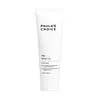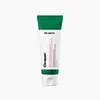What's inside
What's inside
 Key Ingredients
Key Ingredients

 Benefits
Benefits

 Concerns
Concerns

 Ingredients Side-by-side
Ingredients Side-by-side

Water
Skin ConditioningJojoba Esters
EmollientCaprylic/Capric Triglyceride
MaskingGlycerin
HumectantPEG-20 Methyl Glucose Sesquistearate
EmulsifyingMethyl Glucose Sesquistearate
EmollientTocopheryl Acetate
AntioxidantDecyl Glucoside
CleansingPPG-20 Methyl Glucose Ether
Skin ConditioningGlyceryl Stearate
EmollientStearyl Alcohol
EmollientPolyacrylamide
Sapindus Mukorossi Peel Extract
Skin ConditioningChamomilla Recutita Flower Extract
MaskingCamellia Oleifera Leaf Extract
AstringentXanthan Gum
EmulsifyingC13-14 Isoparaffin
EmollientCaprylyl Glycol
EmollientCitric Acid
BufferingDisodium EDTA
Laureth-7
EmulsifyingPhenoxyethanol
PreservativeEthylhexylglycerin
Skin ConditioningWater, Jojoba Esters, Caprylic/Capric Triglyceride, Glycerin, PEG-20 Methyl Glucose Sesquistearate, Methyl Glucose Sesquistearate, Tocopheryl Acetate, Decyl Glucoside, PPG-20 Methyl Glucose Ether, Glyceryl Stearate, Stearyl Alcohol, Polyacrylamide, Sapindus Mukorossi Peel Extract, Chamomilla Recutita Flower Extract, Camellia Oleifera Leaf Extract, Xanthan Gum, C13-14 Isoparaffin, Caprylyl Glycol, Citric Acid, Disodium EDTA, Laureth-7, Phenoxyethanol, Ethylhexylglycerin
Water
Skin ConditioningGlycerin
HumectantSodium Cocoyl Isethionate
CleansingGlyceryl Stearate
EmollientStearyl Alcohol
EmollientCoco-Betaine
CleansingLauramidopropyl Betaine
CleansingSodium Methyl Cocoyl Taurate
CleansingSodium Chloride
MaskingMelia Azadirachta Leaf Extract
Skin ConditioningTheobroma Cacao Seed Extract
AntioxidantMelia Azadirachta Flower Extract
Skin ConditioningEryngium Maritimum Callus Culture Filtrate
Skin ConditioningQuillaja Saponaria Bark Extract
CleansingHouttuynia Cordata Extract
Skin ConditioningIlex Aquifolium Leaf Extract
Skin ConditioningAchillea Millefolium Oil
CleansingGlycine Soja Peptide
Skin ConditioningStreptococcus Thermophilus Ferment
HumectantAspergillus Ferment
Skin ConditioningTriticum Aestivum Seed Extract
PerfumingHedera Helix Extract
AntimicrobialMoringa Oleifera Seed Extract
Skin ConditioningCentella Asiatica Extract
CleansingHydroxypropyl Starch Phosphate
Coco-Glucoside
CleansingCaprylyl Glycol
EmollientCitric Acid
BufferingMaltodextrin
Absorbent1,2-Hexanediol
Skin ConditioningDextrin
AbsorbentButylene Glycol
HumectantGluconolactone
Skin ConditioningPanthenol
Skin ConditioningEthylhexylglycerin
Skin ConditioningLipase
Skin ConditioningProtease
ExfoliatingDipropylene Glycol
HumectantCalcium Chloride
AstringentHydrogenated Lecithin
EmulsifyingMadecassoside
AntioxidantMagnesium Sulfate
Asiatic Acid
Skin ConditioningAsiaticoside
AntioxidantMadecassic Acid
Skin ConditioningTocopherol
AntioxidantDisodium EDTA
Water, Glycerin, Sodium Cocoyl Isethionate, Glyceryl Stearate, Stearyl Alcohol, Coco-Betaine, Lauramidopropyl Betaine, Sodium Methyl Cocoyl Taurate, Sodium Chloride, Melia Azadirachta Leaf Extract, Theobroma Cacao Seed Extract, Melia Azadirachta Flower Extract, Eryngium Maritimum Callus Culture Filtrate, Quillaja Saponaria Bark Extract, Houttuynia Cordata Extract, Ilex Aquifolium Leaf Extract, Achillea Millefolium Oil, Glycine Soja Peptide, Streptococcus Thermophilus Ferment, Aspergillus Ferment, Triticum Aestivum Seed Extract, Hedera Helix Extract, Moringa Oleifera Seed Extract, Centella Asiatica Extract, Hydroxypropyl Starch Phosphate, Coco-Glucoside, Caprylyl Glycol, Citric Acid, Maltodextrin, 1,2-Hexanediol, Dextrin, Butylene Glycol, Gluconolactone, Panthenol, Ethylhexylglycerin, Lipase, Protease, Dipropylene Glycol, Calcium Chloride, Hydrogenated Lecithin, Madecassoside, Magnesium Sulfate, Asiatic Acid, Asiaticoside, Madecassic Acid, Tocopherol, Disodium EDTA
 Reviews
Reviews

Ingredients Explained
These ingredients are found in both products.
Ingredients higher up in an ingredient list are typically present in a larger amount.
Caprylyl Glycol is a humectant and emollient, meaning it attracts and preserves moisture.
It is a common ingredient in many products, especially those designed to hydrate skin. The primary benefits are retaining moisture, skin softening, and promoting a healthy skin barrier.
Though Caprylyl Glycol is an alcohol derived from fatty acids, it is not the kind that can dry out skin.
This ingredient is also used as a preservative to extend the life of products. It has slight antimicrobial properties.
Learn more about Caprylyl GlycolCitric Acid is an alpha hydroxy acid (AHA) naturally found in citrus fruits like oranges, lemons, and limes.
Like other AHAs, citric acid can exfoliate skin by breaking down the bonds that hold dead skin cells together. This helps reveal smoother and brighter skin underneath.
However, this exfoliating effect only happens at high concentrations (20%) which can be hard to find in cosmetic products.
Due to this, citric acid is usually included in small amounts as a pH adjuster. This helps keep products slightly more acidic and compatible with skin's natural pH.
In skincare formulas, citric acid can:
While it can provide some skin benefits, research shows lactic acid and glycolic acid are generally more effective and less irritating exfoliants.
Most citric acid used in skincare today is made by fermenting sugars (usually from molasses). This synthetic version is identical to the natural citrus form but easier to stabilize and use in formulations.
Read more about some other popular AHA's here:
Learn more about Citric AcidDisodium EDTA plays a role in making products more stable by aiding other preservatives.
It is a chelating agent, meaning it neutralizes metal ions that may be found in a product.
Disodium EDTA is a salt of edetic acid and is found to be safe in cosmetic ingredients.
Learn more about Disodium EDTAEthylhexylglycerin (we can't pronounce this either) is commonly used as a preservative and skin softener. It is derived from glyceryl.
You might see Ethylhexylglycerin often paired with other preservatives such as phenoxyethanol. Ethylhexylglycerin has been found to increase the effectiveness of these other preservatives.
Glycerin is already naturally found in your skin. It helps moisturize and protect your skin.
A study from 2016 found glycerin to be more effective as a humectant than AHAs and hyaluronic acid.
As a humectant, it helps the skin stay hydrated by pulling moisture to your skin. The low molecular weight of glycerin allows it to pull moisture into the deeper layers of your skin.
Hydrated skin improves your skin barrier; Your skin barrier helps protect against irritants and bacteria.
Glycerin has also been found to have antimicrobial and antiviral properties. Due to these properties, glycerin is often used in wound and burn treatments.
In cosmetics, glycerin is usually derived from plants such as soybean or palm. However, it can also be sourced from animals, such as tallow or animal fat.
This ingredient is organic, colorless, odorless, and non-toxic.
Glycerin is the name for this ingredient in American English. British English uses Glycerol/Glycerine.
Learn more about GlycerinGlyceryl Stearate is a mix of glycerin and stearic acid.
It is used to stabilize the mixing of water and oil ingredients. By preventing these ingredients from separating, it can help elongate shelf life. It can also help thicken the product's texture.
As an emollient, it helps soften skin and supports barrier-replenishing ingredients.
In cosmetics, Glyceryl Stearate is often made from vegetable oils or synthetically produced.
This ingredient may not be fungal-acne safe
Fun fact: The human body also creates Glyceryl Stearate naturally.
Learn more about Glyceryl StearateStearyl Alcohol is a type of fatty alcohol from stearic acid. It is a white, waxy compound used to emulsify ingredients.
Fatty Alcohols are most often used as an emollient or to thicken a product. Emollients help soothe and hydrate the skin by trapping moisture.
They are usually derived from natural fats and oils and therefore do not have the same drying or irritating effect as solvent alcohols. FDA allows products labeled "alcohol-free" to have fatty alcohols.
Learn more about Stearyl AlcoholWater. It's the most common cosmetic ingredient of all. You'll usually see it at the top of ingredient lists, meaning that it makes up the largest part of the product.
So why is it so popular? Water most often acts as a solvent - this means that it helps dissolve other ingredients into the formulation.
You'll also recognize water as that liquid we all need to stay alive. If you see this, drink a glass of water. Stay hydrated!
Learn more about Water